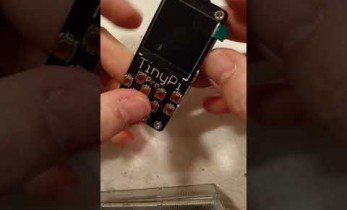Get Awesome Sounds with the Pedal-Pi Programmable Guitar Pedal
Playing guitar can be expensive. If you’re not seeking out the best gear, you’re at least trying to get hold of instruments and amplification that will help you sound awesome. Effects pedals come into the mix too, although they can prove frustrating to set up, especially if someone comes along and knocks your settings.
Increasingly, guitar pedals come with programmable FX that can be saved. With this development comes an opportunity. Couldn’t you just build your own?
This is exactly where the Pedal-Pi comes in.
Hiding a Raspberry Pi Zero inside, the Pedal-Pi features a custom PCB, two configurable push buttons, a configurable switch, a blue LED, and True Bypass footswitch. A micro USB power supply is required (the whole pedal is powered by the Pi), while input and output jacks are included, as per any guitar pedal.
Essentially a HAT, the input amplifies and filters the guitar signal, then the Analog to Digital Converter (ADC) sends the signal to the Pi Zero, where the digitized waveform has the programmed effects added in the Digital Signal Processing phase. This might be fuzz, distortion, echo, delay, whatever.
With a new waveform created, the Pi Zero creates a new analog signal, which is filtered and ready to be sent via the output to the amp.
This is the sort of tool that you can use to create your own unique sound. Obviously, knowledge of Linux is an advantage, but as long as you can comfortably program in C (or learn how to) then you can program the Pedal Pi.
Fancy your own? You have two options: the first is to buy a Pedal-Pi kit, which will set you back £49.95. The alternative is to buy the custom Pedal-Pi PCB (£9.95), and use the full bill of materials – plus your own Raspberry Pi Zero – to fabricate your own.

































Leave your feedback...